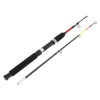Price: $201.05
Monthly Archives: July 2015
The 2 Social Media Sites That You Aren’t Taking Advantage of In Your Business
Social media apps and sites popup with alarming frequency. Also alarming, is the rate at which these platforms seem to overtake each other in traffic and popularity. While you can’t go wrong growing your influence at the top of the food chain where a couple of massive entities still dominate, you can sure as heck get innovative and ride the wave on newer trends to quickly become a standout resource for potential followers. With that in mind, here are a couple of platforms most marketers aren’t taking adequate advantage of.
Pinterest – Pinterest is the iceberg of social media platforms: Unless you’ve spent some time exploring, it might seem like not that much is going on over there, but you’d be dead wrong. When measured in monthly unique visitors, Pinterest is actually the 4th most visited social network on the English-speaking planet; it trails only Facebook, Twitter, and LinkedIn. Yep, it even beats out heavyweights like Tumblr and Instagram.
The nature of Pinterest, which is all about quickly sharing images, whether original or curated, makes it such a great opportunity for brands. On Pinterest, “boards” can be created within a theme, so a board may consist of “nature scenes,” for example. Your business can take advantage of this unique tagging system, no matter what niche you’re in, and grant itself massive exposure. Let’s say you were working with an offline client who was a construction contractor, for example. You could create an account for them and start adding images of their stellar work to boards on houses, architecture, even remodeling. And, yes, those all exist.
With unique monthly hits in the hundreds of millions per month, don’t pass up on this opportunity to turn your brand, site, or niche expertise into a visual, sharable commodity.
Periscope – “Peri-what?!” you might say (especially if you’re not on the cutting edge of social media already). Periscope is a new app that allows individuals to livestream what their phone camera is seeing to the internet. In turn, users can follow their stream and comment and chat in real time. The concept of livestreaming is years old, but Periscope seem to have finally been able to popularize it on mobile. Since that’s where most people are spending their time these days anyways, it’s started to really take off.
The whole point of Periscope is to teleport users to another location, lifestyle, or adventure. Savvy social media marketers have taken to announcing that the most interesting parts of their day will be streamed – and you’d be surprised at what really seems to hit home for people! Make a live Q&A session happen during your lunch break, show off your daily work ritual that really gets you in the zone. Even if the majority of your day involves sitting at a computer, you can find a way to deliver some livestreamed value to people out there who are in the same boat or who are trying to follow in your footsteps.
Of course, these are far from the only social hangouts you should be working on, but they’re good places to start. Depending on the needs and demographics of your niche, you may also find certain platforms make a lot more sense for content presentation, so don’t be afraid to deviate when it makes sense.
ZOEVON Fashion Jewelry Rings For Women 3ct Princess Cut Square CZ Diamond Women's Wedding Rings
1 Pcs 6 Hole stainless steel Keychain Outdoor Multi-purpose Hiking Climbing Camping Keychain with 5 Mini Steel Key Rings
Redeveloping the Headline – How to Generate and Narrow Down Headline Ideas
Ever wondered how professional copywriters, ad agency creatives, and online marketers arrive at killer headlines that draw readers in and have them pulling out their wallets like nobody’s business? Wonder no more, because today, we’ll be taking a look at exactly how many of those headlines come to be.
The Process
One of the things that too many people don’t understand about headline writing is that it is a process. Just like anything else worth doing for your business, proper headline writing takes up time and concerted effort. The misconception that time spent on headlines should be relatively smaller compared to, say, the time spent to write a sales letter, is probably rooted in the fact that the final product where headlines are concerned is fairly small.
A small final product doesn’t mean a small effort, however. The next time you’re writing a headline for your email, sales letter, or even just your next blog post, try this:
Sit and write 25 to 50 headlines. Don’t stop until you’re there. How do you come up with so many ideas? Go bigger than you think you can, go more ridiculous than you think you can. In this initial phase, we’re too often already wearing blinders and filtering out ideas that could be developed later on if we gave them a chance.
Even if any idea seems too risque, “out there,” or bold, jot it down to get the juices flowing. A big mistake many people make when trying to write their own headline copy is that they don’t actually write ideas down unless they think they’re “good enough.” Most people aren’t able to visualize in our heads as well as we can do on a piece of paper, and you’re doing yourself a disservice by not letting the process take its course out in the open.
Once you’ve got your ideas on paper, go through the list one by one and ask yourself if there are other directions you can go with it (variations, slight changes, etc.), or if the idea just wasn’t up to snuff and needs to be eliminated. In this stage, you’ll drop out the weaklings while simultaneously developing your stronger ideas.
When working on variations and trying to pick out your top contenders, here are a couple of things to keep in mind:
– People generally buy on emotion: things like love & acceptance, the want for wealth and popularity, etc. are almost always elements of a successful headline. Don’t hesitate to push a bit with your headline, oftentimes a (not-too-misleading) shock means that people will stop and read.
– The age-old trick about including numbers of tips, tricks, and steps into a headline holds true. People like things that sound logical, specific, and easy, so “3 easy steps to eliminating acne at home” is likely to perform better than “Here’s how to eliminate acne at home!”
Finally, your overall champion of a headline, once you’ve narrowed it down to 2-5, will probably not be able to be determined by intuition alone, especially not without experience, so get ready to split test, split test some more, and then split test again.
5Pcs/Set 25 * 3mm / 37 * 4.5mm Fishing Lightstick Fishing Fluorescent Rod Float Fishing Light Stick Night Glow Stick
Portable 1M 2 Sections Fly Fishing Rods Fibre Glass Fishing Pole Reinforced Plastic Lightweight Sea Fishing Pole
New 3Pcs/Set 10g #2/0 Fishhooks Fish-like Fishing Lures Lead Jig Head Hook Pesca Fishing Bait Hooks
Elegant Floor length Women Summer Beach Ball Evening dress Long Maxi Party Gown Formal dresses for Special occasion CL7546
Why You Might Want To Pay Attention To Podcasting Again
Let’s get one thing out in the open straight away: We all know that podcasts are nothing new. In this newsletter, I’m not going to try and tell you that podcasts are anything new – these web-hosted, episodic radio show type broadcasts have been around for roughly a decade now. So no one would have known that they would have just soared back into popularity, but, by gosh, they absolutely have.
Of course, the time to develop the medium and for listeners/viewers to grow their expectations means that anyone who wants to standout these days is going to need to try a little harder in order to make a splash. Let’s take a look at how you can turn your personal brand(s) into the splashiest of podcast.
First things first, dig into something that you can really dominate. What are you so passionate and knowledgeable about that you’ll be able to put in more hours each day than anyone else? What part of your business do you feel you have the strongest execution in and would be the most impressive for someone earlier on in their journey to learn about?
Once you’ve honed in on something you can do well, start thinking about how you could make it interesting. For most people, podcasts start out as a series of videos or recordings where they simply talk about what they know. As long as you’re personable and can pull that off with some enthusiasm, you’re ahead of the game. That said, once you get several episodes deep, even the most prolific thinkers might be at a loss as to what to say into the microphone.
Here, a great route to go down is the Q&A route. If you’ve built up a little subscriber base, ask them to tell you what they want to know, ask how you can help with the problems they’re facing, etc. Or you can go down the tutorial route. Or you can create themed episodes in which you do a giant fast paced knowledge-dump of everything you’ve got on a certain topic. Keep your show interesting at all costs; look at what else exists in your market, and make your content the obvious choice.
This revival is also very much about the use of diverse media. In the early days, podcasts were often audio-based and lived in itunes, embedded in webpages, or even on platforms like Soundcloud and the like. Now, many podcasts come in video form – it’s not a necessity, but it does give you broader options for presenting your show. Even if you stick to audio format, take advantage of promotional graphics and logos to pique interest for your podcast.
Become memorable through the use of a catchy intro or jingle. Don’t make music? Don’t write jingles? No problem, just grab a freelancer – old standbys like fiverr, odesk, and freelancer are alright to start, but with a bit of searching you can find specialists ready to spice up your show intro without breaking the bank. There’s a reason advertisements have had jingles for decades: They get stuck in your head, and, along with them, comes brand recall.
Finally, assure good audio (and video, if applicable) quality. Don’t worry, you can do this on a budget. For most audio podcasts, you can achieve a professional sounding setup for less than $100. Grab a quality USB mic (the ‘Snowball’ and other iterations by Blue are really excellent). Once you’ve got your recording, learn a bit about how to make your voice sound nice and rich using a free program like Audacity. When you launch your podcast, try to have several episodes already recorded so that listeners will be hooked from day one.






